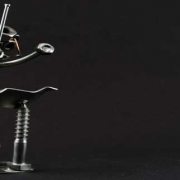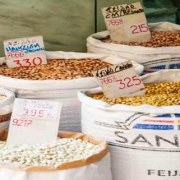Europe – from LNG’s killing fields to its innovation hub
/0 Comments/in Long Articles/by Rudolf HuberDuring the 1950ies, the energy world started to understand that something useful had to be done with Natural Gas. It was a by-product of nearly every oil well and as it could not be put to good use most of the time, it was flared.
Environmental protection as we know it today was not even an idea back then. Still, people realized that burning gas to be rid of it was a wasteful proposition. Flaring gas also meant that it had no commercial value attached to it. This encouraged some to play around with new ideas for use and commercialization. It was put to waste here – it was needed there. What could possibly go wrong?
Before the end of the 19th century, we knew that methane became a liquid below 161 degrees Celsius and at atmospheric pressure. By the 1950s, the process of methane liquefaction was a well-established local industry. At the time, gas was liquefied to store it in tanks when other means were not available.
But there was no real transport of LNG aside from some very limited onshore applications.
That all changed about 60 years ago in 1959 with the first voyage of the Methane Pioneer. Here was a converted cargo vessel that brought the first couple of LNG cargos from Lake Charles in the US to Canvey Island in the UK.
That was the birth of intercontinental LNG and for the next 10 years, Europe was the sole importer of LNG worldwide. In 1969 the Japanese LNG adventure began and slowly grew into what should become the biggest importer on Earth. More and more this also made LNG an Asian story instead of a European one.
If you had looked at the European LNG scene a little less than 10 years ago, it was comatose. The birthplace of modern LNG, the first real intercontinental LNG market was not a relevant factor anymore in the LNG world. To say it with the words of a project developer – Europe does not matter.
That being said, it pays to look again. Many times in the past I had said that Europe will not only make a comeback. It will become the hotbed of LNG innovation. If not in technical terms then it sure will do so in trading terms.
Man times in the past, the LNG world had predicted the imminent rise of a purebred LNG price marker. Many places – most frequently in Asia and the Middle East – have been touted to be the first real thing.
But they all disappointed so far.
What will an LNG price marker have to deliver to stand up to the expectations of the market?
To know that, we only need to look at modern Natural Gas trading hubs. Those need gas-on-gas competition to drive price discovery by a mechanism of demand and supply. Any potential LNG hub needs to be able to do the same thing.
But such a thing is easier said than done. True trading means a lot of overcapacity in all parts of the logistical chain. It means that physical deals can be unwound at any time in the market – for a price of course. It means that if you are ready to pay the price you will always find LNG in the market. And consequently, you will be able to release any amount of LNG on short or no notice.
Let’s look at the release part.
Asian players have started to enter the European market. Are they interested in extra trading revenue? I doubt. They have recognized Europe or more precisely North-Western Europe as a place where they can dump excess LNG. Many of them had contracted massive portfolios of long-term LNG in the past and they receive those cargos now if they really need them or not.
But their own brittle markets cannot absorb this onslaught. So they need to find ways to get rid of what they have in excess. Such a place is more commonly referred to as a sink market. And the only sink market with some serious potential is North-Western Europe.
This means that this is the only place on Earth that has the potential to receive any LNG at the last minute and absorb it at a price that’s foreseeable. Natural Gas pricing hubs in the region allow for competitive and transparent price discovery. There is still copious regasification terminal capacity in the region although this starts to whittle down at a very rapid clip. Gas pipeline infrastructure is super-developed and can deal with almost any rush of gas. Finally, copious pipeline gas import is amplified by massive underground gas storage on the continent. This makes sure that even if the cargos don’t come there won’t be lights out.
Does this make LNG a commodity in the sense a screen trader would understand the term yet?
Not yet.
North-Western Europe is capable of providing an absolutely essential piece to the puzzle. It does so by giving the LNG market a measure of flexibility to deal with whatever distorts the picture of a perfect ant colony. And that’s what LNG is still conceived to be. A perfect dance of cargo from one point to the other. Take this mental image and superimpose many of them and you have LNG as it should be if it was to live out its design specifications.
Now add in reality. Consumption points can’t always use what they get. Production points can’t always deliver. Add portfolio players in between trying to take advantage of any market distortion. Sometimes things do mess up.
There needs to be a safety valve and that’s what North-Western Europe provides – to a degree. Can you trust North-Western Europe to always perform?
No, you can’t.
You still need to be very prepared to be able to use that potential flexibility as it’s hard and laborious to execute all kinds of trades. Ergo, LNG is not a commodity yet as real commodity status would dictate that it be relatively easy and pain-free. For a price of course. Today, those services often cannot be accessed at any price.
What it needs is a Market Maker.














Leave a Reply
Want to join the discussion?Feel free to contribute!